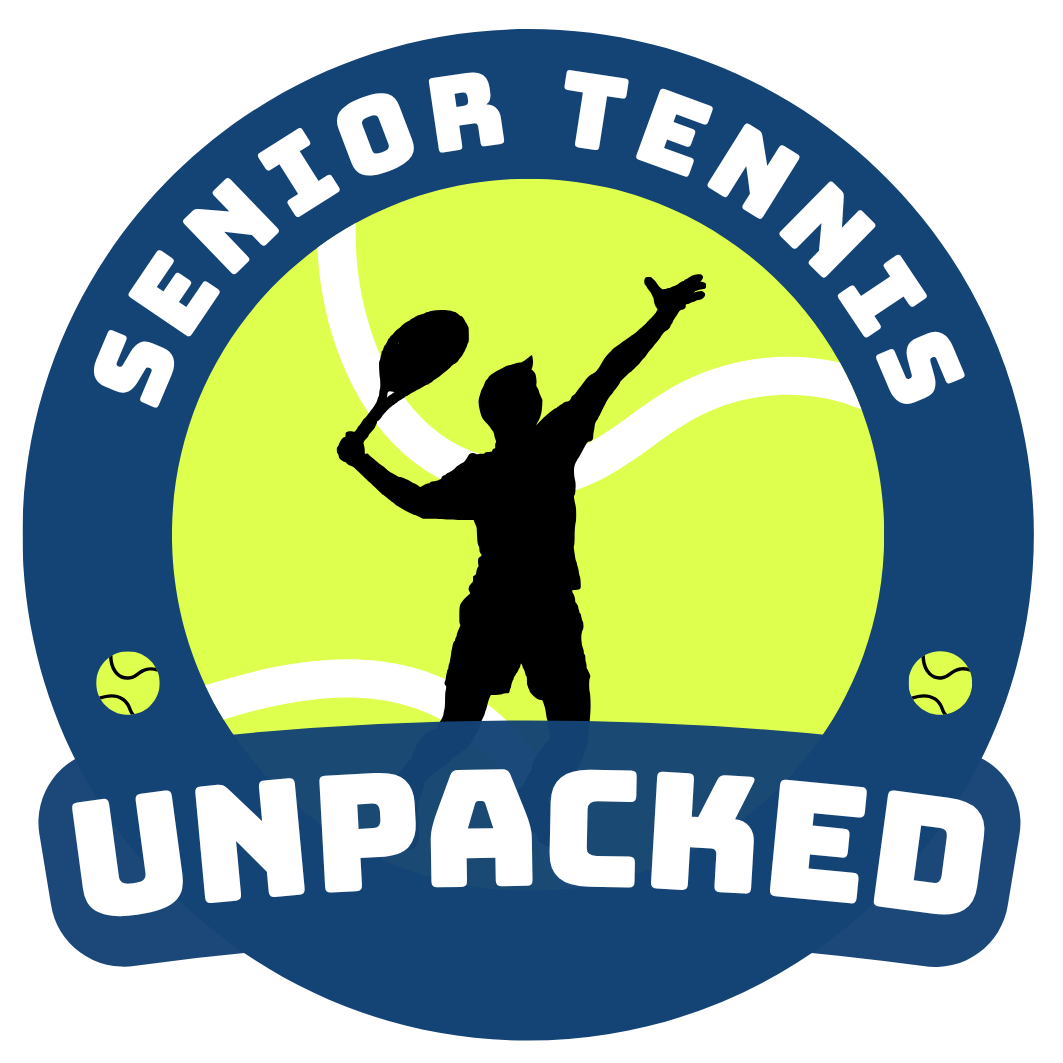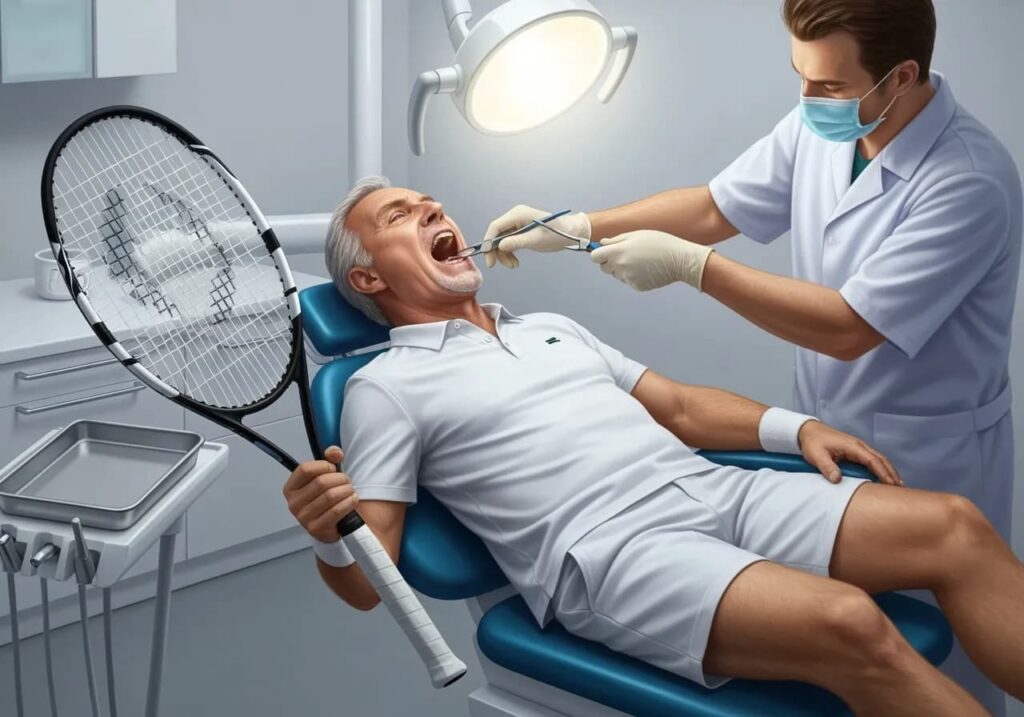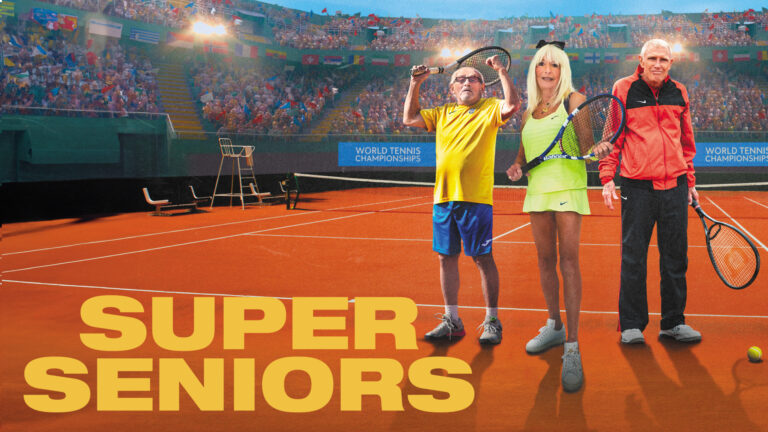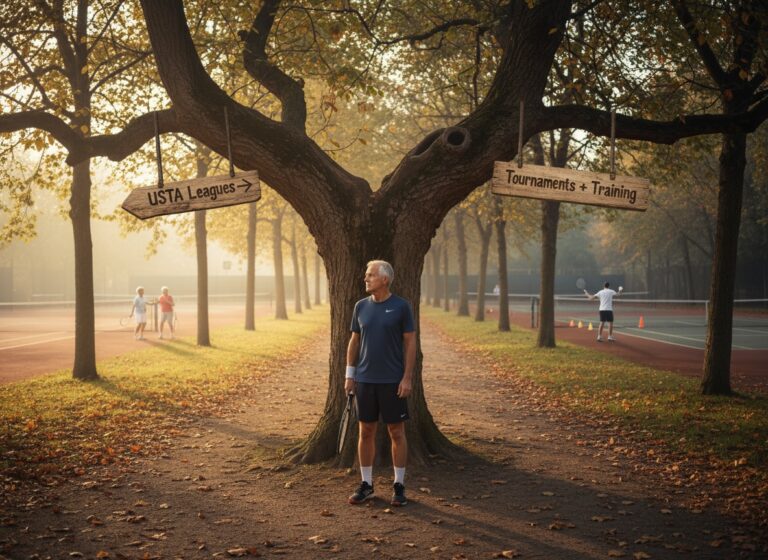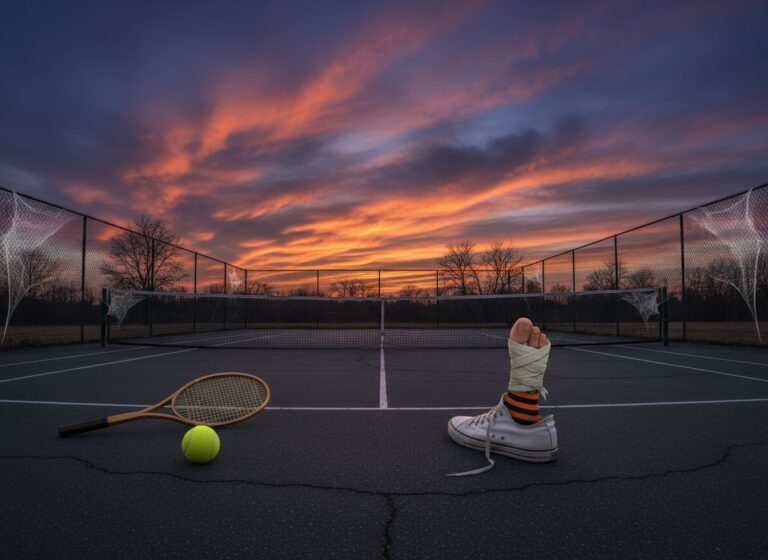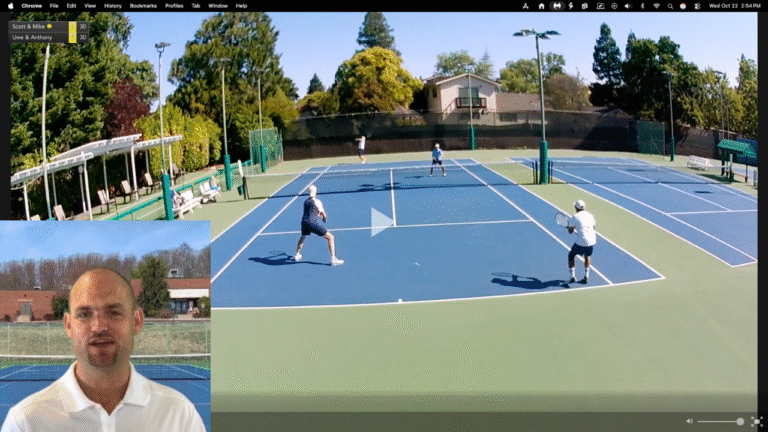If you’ve followed my rambling quest to improve my senior tennis game, you know I have a fixation: hitting that magic 4.5 level before I need bifocals to read the scorecards. The goal isn’t just bragging rights (though let’s be honest, I’d like to stop apologizing for flubs at the net). I want a fighting chance in Age Group Tournaments, especially when the stakes go to Gold Ball territory.
Now, driven determination is great—until you realize half your plan involves the kind of fitness discipline I only bring out maybe twice a year, tops. Call it a New Year’s resolution, call it wishful thinking, but lately, it’s mostly been call-in-sick levels of commitment. Then, in a twist that probably belongs in a sitcom, a trip to the oral surgeon knocked some sense into me.
Reality Bites (and So Do Oral Surgeons)
Let’s set the stage: I’m not about to grace the cover of any health magazines, mental or physical. But I do stay in decent shape. I can drag myself through four, best-of-three matches in a day—no small feat when you use “double bagel” to describe your breakfast, not your match score. Most days, I play enough tennis that my Apple Watch closes its own rings out of envy.
My resting heart rate hovers around 43 beats per minute. Yes, I know that puts me somewhere between “endurance athlete” and “hibernating bear.” It actually freaked me out enough that I went to see my doctor, who ran an EKG, and glanced at the previous year’s results, and shrugged. There was absolutely no difference. According to him, Lance Armstrong and I have something in common, not the cheating part, just our BPM. Take that, sedentary living. No wonder the USTA keeps hyping tennis as the secret to a longer, happier life.
Blood pressure? Historically fine. Every Doctor and Nurse tells me, “Perfect numbers!” whenever I get it checked. Most of my focus has been on cholesterol, not blood pressure. So when I rolled in for a routine tooth extraction, I expected nothing out of the ordinary—just an old root canal finally giving up after a decade of night grinding and deuce points, not nerves about the dental chair.
They strap me down, as if I might leap up and bolt, and, as always, check the numbers. I had my usual morning dose: three and a half mugs of strong coffee (doctor’s orders, in my mind). I’ve shown up to doctor visits with that much caffeine in my veins before. The nurse takes my reading, and suddenly my blood pressure explodes on the monitor. We’re talking 163 over 88.
Excuse me? I nearly fell out of the ridiculous chair. I blame the machine. Maybe it’s “White Coat Syndrome”—you see a lab coat, your body panics, the numbers spike. But this was practically stratospheric. I started sweating at the idea they might pull cancellation papers instead of molars.
The nurse, ever helpful, tells me it’s probably all the coffee. Sure, blame the beans… Not exactly reassuring, but hey, I’d rather get a lecture about caffeine than skip the extraction and limp home with a cracked molar.
Post-Op Panic (and a Side of Good Sense)
Once the numbness wore off, my nerves kept firing. Why was my blood pressure so high? I confessed to my wife, who, with her usual blend of logic and “I told you so” undertones, suggests checking it at home, pre-coffee. Sounds reasonable. For two mornings, I trade strong brew for a blood pressure cuff. The results aren’t as shocking as at the surgeon’s, but it’s not pretty. My systolic is at Stage 2 Hypertension. That’s not a number anyone wants to see staring back at them.
I’m stubborn, but not foolish. I still think I can fix myself with a little common sense before heading straight for pharmaceuticals. Armed with the wisdom of the internet, my notepad, and a lingering headache (possibly both from the tooth and the numbers), I decide on a plan: daily blood pressure checks, a log for my doctor, and two weeks to prove I’m not on a surefire path to a daily pillbox.
But I can’t just coast on “good enough.” Everything I need to fix, blood pressure included, also haunts my tennis game. Overweight? Slows me down on the court. Sugar habits? They hit my energy and recovery. Strength? That’s a polite way to say my “core” is more like a soft shell. Meditation? My focus wobbles worse than my one-handed backhand when the chips are down.
Let’s break it down.
Weight Watch: More Than Vanity Metrics
I’ve said it before, but it’s time I tape the reminder to my fridge: drop 15 to 20 pounds. Not for swimsuit weather, but to shake off that sluggishness that creeps in late in the second set. Carrying around the extra pounds doesn’t just jack up my blood pressure—it saps my stamina, wears on my knees, and makes chasing balls look like a special effects job.
Every pound off means one less excuse at changeovers. It’s just that simple. Plus, if my jeans fit better, all the sweeter.
Sweet Tooth vs. Tennis Goals
Here’s the confession: sugar is my kryptonite. I haven’t touched alcohol in decades, but cookies? I could empty a bakery. Ice cream? You might have to pry the spoon out of my hand—Rocky Road, peanut butter chocolate, all of it.
Processed sugar isn’t just bad for my waistline. It quietly raises blood pressure by messing with how the kidneys handle salt, throwing off insulin, and (surprise!) stiffening blood vessels. That last one is especially nasty for us seniors. Your arteries stop acting like flexible hoses and turn into pipes in January. High blood pressure follows. And, as if that’s not enough, sugar fires up inflammation all through your body.
Less inflammation means more energy, less pain, and a chance to actually recover after a hard match, not just survive. So, for now, cookies are off the lineup. If I can’t kick the sweets completely, I’ll try to get my fix from fruit. My reward for getting numbers down? Once a week, I get two scoops at 31 Flavors. If not, the blood pressure monitor sits in the bowl, judging.
All this matters for tennis. The less junk in my system, the better I move. Lower blood pressure, less swelling, quicker feet, and maybe, just maybe, an end to the late-match fadeouts.
Strong Like…At Least a Sturdy Pine
My heart is working great. The arteries? Not so much. Turns out, cardio from tennis only gets you halfway. Building elasticity in the blood vessels requires muscle. Strength work—especially legs, hips, and core—shouldn’t just be a “winter when bored” project.
Studies show lifting weights or doing resistance bands helps those stubborn arteries stay flexible. That means less chance I’ll need medication and more pop in my shots. Strengthening my lower half keeps my feet quick, my core tight, and my backhand annoying enough to draw groans from the other side of the net.
Upper body strength pays dividends too. More power, better stability when I’m volleying, less risk the serve turns into a slow-motion highlight for my opponent.
Calm Your Mind, Lower the Numbers
I always thought meditation and mindfulness were things you pick up after a yoga retreat (or after your first grandkid arrives). Turns out, there’s real science here. Meditation slashes blood pressure by easing stress hormones—which means less cortisol and adrenaline jamming up your system, squeezing your blood vessels, and sending your heart into overdrive. Meditating daily doesn’t make me a monk, but it might mean I stop seeing red after a missed short ball.
Let’s face it, the mental side of tennis is almost half the game—staying cool during tiebreakers, shaking off a blown overhead. Meditation trains that focus. A few deep breaths, a steady routine, and I’m less likely to spiral when a match turns south.
Keeping Perspective (and Maybe an Ice Pack)
Some things do work in my favor. I don’t drink. I get decent sleep (except on draw nights, then I sleep about as much as my stress ball). With these basics in place, my top priorities have to be controlling sugar, getting my weight down, hitting the gym, and keeping my brain chilled through meditation.
Honestly, I’d rather do the hard work now than have someone hand me a pill and a schedule of doctor’s visits. More than that, every little gain here stacks up to help me stay on the court. Lose weight, get stronger, calm the nerves—those tweaks help as much as drilling forehands if you’re counting on playing well into your seventies or eighties.
At the end of the day, my quest for 4.5 (and maybe a Gold Ball before I need a walker) depends as much on my choices off court as my groundstrokes. Showing up battle-ready is half the gig in senior tennis. Duct tape and Advil can only get you so far.
The Takeaway: Do the Hard Stuff Now, Play More Later
This is a wake-up call I didn’t want but probably needed. The numbers don’t lie, and the racquet doesn’t swing itself. Maybe you’ve had a similar scare or a doctor’s chat that changed your tune? Maybe you’re mastering your sugar habits or your own blood pressure saga. Share your war stories and wins in the comments. Let’s keep each other honest, entertained, and—most of all—playing.
Stay stubborn, stay moving, and don’t forget to laugh about it. We’ve got more matches in us yet.
